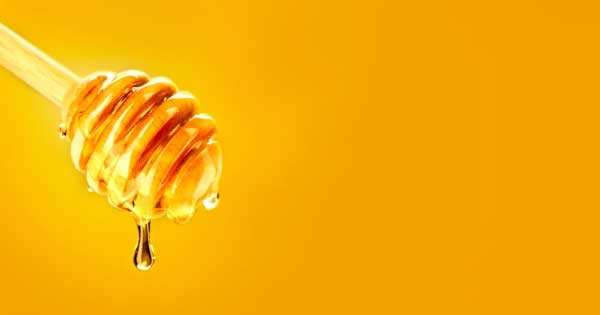
Manuka honey healed pressure wounds in sick children better than standard care — and this is just one reason why high-quality honey deserves a place in your first-aid kit or medicine cabinet
Honey is a healing wonder of nature, its use dating back thousands of years. Not only is honey depicted in Stone Age paintings,[i] but it’s referenced as a drug and ointment on a Sumerian writing tablet from 2100 to 2000 BC. Aristotle also referred to honey as a useful salve for sore eyes and wounds circa 384-322 BC.[ii]
There’s a reason why honey was prized for both nutrition and medicine in ancient times, and even with all the advances of modern medicine, it’s still worthy of a prominent position in your medicine chest.
Given its commonality and tendency to be regarded as primarily a sweetener for tea or biscuits, it’s easy to overlook the complexity of this sticky substance. But honey is known to contain hundreds of compounds,[iii] each with its own potential role to play in your health.
What Exactly Is Honey?
Honey starts with nectar, a sweet liquid made by plants. Honey bees visit flowers and drink the nectar, which is made up of about 80% water, via their proboscis, a special straw-like tongue.
The nectar is carried in their “honey stomach” and mixed with the enzyme invertase, produced in bees’ salivary glands (bees can carry a load of nectar close to their own bodyweight — an aeronautical feat!).[iv] This catalyzes the process of changing the sucrose found in nectar into the glucose and fructose found in honey.[v]
Other enzymes are also involved in turning nectar into honey, changing its flavor and pH, for instance. Once back at the hive, forager honey bees transfer the nectar, via their mouths, to house bees, which regurgitate and re-consume the nectar repeatedly, over a period of about 20 minutes, exposing it to more enzymes, breaking down its sugars and reducing its moisture content even more, to about 20% water.[vi]
At that point, the nectar is put into a honeycomb where the bees use their wings as fans to dry the honey out until it contains only about 17% to 18% water. The honeycomb is then capped with beeswax for storage. In the hive, honey is mixed with pollen to make food known as bee bread for baby bees, but humans also get to enjoy the benefits of honey bees’ creations when using honey for their own purposes.
Five Medicinal Uses for Honey
1. Help Heal Wounds and Burns
For minor cuts, scratches and burns, honey can be applied topically to help speed healing. Honey acts as a broad-spectrum antibacterial agent and is known to lower prostaglandin levels while elevating nitric oxide end products, processes that help explain honey’s wound-healing powers.[vii]
Honey’s unique formulation, including its acidity, hydrogen peroxide content, osmotic effect and antioxidants, is responsible for a number of beneficial processes that stimulate and promote wound healing, such as:[viii]
- Enhanced tissue growth
- Increased epithelialization
- Reduced scar formation
- Stimulation of immunity
Honey is so powerful that in a study of critically ill children with pressure injuries, the use of a Manuka honey dressing/gel decreased wound healing time compared to standard care. In fact, the children treated with honey were 1.9 more likely to have their wound completely healed than those who received only standard care.[ix]
2. Soothe Coughs and Upper Respiratory Tract Infections
Honey is regarded as highly beneficial in soothing irritating coughs, according to the ancient Indian medical system known as Ayurveda. Hippocrates was also known to use honey for coughs.[x] Modern research supports this use, with honey found to relieve cough symptoms better than no treatment, placebo and the antihistamine diphenhydramine. It also shortens the duration of cough better than the asthma drug salbutamol.[xi]
A systematic review and meta-analysis also revealed that honey was superior to usual care for improving symptoms of upper respiratory tract infections, including a reduction in cough frequency and severity.[xii] Among children with upper respiratory tract infections, honey also worked as well as the over-the-counter cough medication dextromethorphan, and better than no treatment, for relief of nighttime cough.
Further, parents rated honey more favorably than cough syrup, such that researchers concluded, “Honey may be a preferable treatment for the cough and sleep difficulty associated with childhood upper respiratory tract infection.”[xiii]
Even the U.S. Centers for Disease Control and Prevention advises, “Use honey to relieve cough for adults and children at least 1 year of age or older.”[xiv] Note that children under 1 year of age shouldn’t consume honey because it can carry Clostridium botulinum bacteria.
3. Support Oral Health
Unlike sugar, which is detrimental to oral health, honey has multiple pharmacological properties that support good oral health. Among them:[xv]
|
Antibacterial effects on oral pathogens, including Streptococcus mutans, which can cause cavities |
Prevents the growth of biofilm organisms and reduces the production of acids in dental plaque |
|
Helps reduce gingivitis and prevent dental caries |
Works as well as chlorhexidine as a mouthwash |
|
Anticancer effects, particularly on oral squamous cell carcinomas in laboratory studies |
Enhances post-tonsillectomy healing |
|
Reduces malodor |
|
Manuka honey, when applied to the gums twice daily, even reduced plaque formation on par with chlorhexidine mouthwash and significantly better than xylitol chewing gum.[xvi]
4. Relieve Hemorrhoid Symptoms
Honey’s antibacterial and wound-healing properties make it a useful natural remedy for hemorrhoid relief. In a pilot study, a mixture of honey, olive oil and beeswax (at a ratio of 1:1:1) significantly reduced bleeding and itching in patients with hemorrhoids.[xvii]
The mixture also reduced pain, bleeding and itching in patients with anal fissures and was previously found to be effective for diaper rash, psoriasis, eczema and fungal infections of the skin.
5. Heal Dandruff and Seborrheic Dermatitis
Applying honey to your scalp may stop dandruff and seborrheic dermatitis, a form of eczema that causes scaly, greasy patches and redness, often on the scalp.
Applying a daily mixture of 90% honey and 10% water to scalp lesions, then rubbing it in for two to three minutes and letting it sit for three hours before rinsing, relieved itching and scaling after one week of treatment.[xviii] After two weeks, skin lesions had also healed and a subjective improvement in hair loss was noted.
Beware of Adulterated Honey
When choosing honey to apply to minor cuts or help relieve dandruff on your scalp, quality matters. Raw honey is closest to its natural form and will retain much of its beneficial enzymes, amino acids and antioxidants. Because raw honey comes straight from the honeycomb, it is cloudy and contains additional beneficial substances like bee pollen and bee propolis.
Most honey sold in stores is pasteurized, however, which may damage antioxidants and enzymes while destroying bee pollen, bee propolis and other compounds responsible for many of honey’s healing effects. Pasteurized honey is clear with a longer shelf-life than raw honey but isn’t likely to be useful for therapeutic effects.
Pasteurized honey is also commonly adulterated with sugar or mixed with low-quality honey to make it more profitable. Far from supporting health, consuming adulterated honey may have adverse effects on your liver, kidneys, heart and brain.[xix] Depending on your needs, there’s also medical-grade honey and Manuka honey, which is particularly known for its antibacterial properties and wound-healing potential.
When it comes to soothing a cough or making a homemade dandruff remedy, however, there’s little downside — and limitless upsides — to keeping a jar of high-quality raw honey in your medicine chest.
References: [i] Iran J Basic Med Sci. 2013 Jun; 16(6): 731-742. https://www.ncbi.nlm.nih.gov/pmc/articles/PMC3758027/ [ii] Asian Pac J Trop Biomed. 2011 Apr; 1(2): 154-160. https://www.ncbi.nlm.nih.gov/pmc/articles/PMC3609166/ [iii] Iran J Basic Med Sci. 2013 Jun; 16(6): 731-742. https://www.ncbi.nlm.nih.gov/pmc/articles/PMC3758027/ [iv] Australian Honey Bee Industry Council, How Bees Make Honey https://honeybee.org.au/education/wonderful-world-of-honey/how-bees-make-honey/ [v] Bee Culture. July 25, 2016. https://www.beeculture.com/the-chemistry-of-honey/ [vi] Bee Culture. July 25, 2016. https://www.beeculture.com/the-chemistry-of-honey/ [vii] ScientificWorldJournal. 2011; 11: 766-787. https://www.ncbi.nlm.nih.gov/pmc/articles/PMC5720113/ [viii] ScientificWorldJournal. 2011; 11: 766-787. https://www.ncbi.nlm.nih.gov/pmc/articles/PMC5720113/ [ix] Pediatr Crit Care Med. 2021 Jun 1;22(6):e349-e362. doi: 10.1097/PCC.0000000000002611. https://pubmed.ncbi.nlm.nih.gov/33181730/ [x] Iran J Basic Med Sci. 2013 Jun; 16(6): 731-742. https://www.ncbi.nlm.nih.gov/pmc/articles/PMC3758027/ [xi] Cochrane Database Syst Rev. 2018 Apr; 2018(4): CD007094. https://www.ncbi.nlm.nih.gov/pmc/articles/PMC6513626/ [xii] BMJ Evid Based Med. 2021 Apr;26(2):57-64. doi: 10.1136/bmjebm-2020-111336. Epub 2020 Aug 18. https://pubmed.ncbi.nlm.nih.gov/32817011/ [xiii] Arch Pediatr Adolesc Med. 2007 Dec;161(12):1140-6. doi: 10.1001/archpedi.161.12.1140. https://pubmed.ncbi.nlm.nih.gov/18056558/ [xiv] U.S. CDC, Treatment for Common Illnesses, Common Cold https://www.cdc.gov/antibiotic-use/colds.html [xv] Journal of Oral Biosciences. 2019, 61, 32-36 https://sci-hub.se/10.1016/j.job.2018.12.003 [xvi] Contemp Clin Dent. 2010 Oct-Dec; 1(4): 214-217. https://www.ncbi.nlm.nih.gov/pmc/articles/PMC3220139/ [xvii] The Scientific World. October 31, 2005. https://www.hindawi.com/journals/tswj/2006/602698/ [xviii] Eur J Med Res. 2001 Jul 30;6(7):306-8. https://pubmed.ncbi.nlm.nih.gov/11485891/ [xix] Foods. 2020 Nov; 9(11): 1538. https://www.ncbi.nlm.nih.gov/pmc/articles/PMC7692231/
Important Notice: This article was originally published at greenmedinfo.com bwhere all credits are due.
Disclaimer
The watching, interacting, and participation of any kind with anything on this page does not constitute or initiate a doctor-patient relationship with Dr. Farrah™. None of the statements here have been evaluated by the Food and Drug Administration (FDA). The products of Dr. Farrah™ are not intended to diagnose, treat, cure, or prevent any disease. The information being provided should only be considered for education and entertainment purposes only. If you feel that anything you see or hear may be of value to you on this page or on any other medium of any kind associated with, showing, or quoting anything relating to Dr. Farrah™ in any way at any time, you are encouraged to and agree to consult with a licensed healthcare professional in your area to discuss it. If you feel that you’re having a healthcare emergency, seek medical attention immediately. The views expressed here are simply either the views and opinions of Dr. Farrah™ or others appearing and are protected under the first amendment.
Dr. Farrah™ is a highly experienced Licensed Medical Doctor certified in evidence-based clinical nutrition, not some enthusiast, formulator, or medium promoting the wild and unrestrained use of nutrition products for health issues without clinical experience and scientific evidence of therapeutic benefit. Dr. Farrah™ has personally and keenly studied everything she recommends, and more importantly, she’s closely observed the reactions and results in a clinical setting countless times over the course of her career involving the treatment of over 150,000 patients.
Dr. Farrah™ promotes evidence-based natural approaches to health, which means integrating her individual scientific and clinical expertise with the best available external clinical evidence from systematic research. By individual clinical expertise, I refer to the proficiency and judgment that individual clinicians acquire through clinical experience and clinical practice.
Dr. Farrah™ does not make any representation or warranties with respect to the accuracy, applicability, fitness, or completeness of any multimedia content provided. Dr. Farrah™ does not warrant the performance, effectiveness, or applicability of any sites listed, linked, or referenced to, in, or by any multimedia content.
To be clear, the multimedia content is not intended to be a substitute for professional medical advice, diagnosis, or treatment. Always seek the advice of your physician or other qualified health providers with any questions you may have regarding a medical condition. Never disregard professional medical advice or delay in seeking it because of something you have read or seen in any website, video, image, or media of any kind. Dr. Farrah™ hereby disclaims any and all liability to any party for any direct, indirect, implied, punitive, special, incidental, or other consequential damages arising directly or indirectly from any use of the content, which is provided as is, and without warranties.








